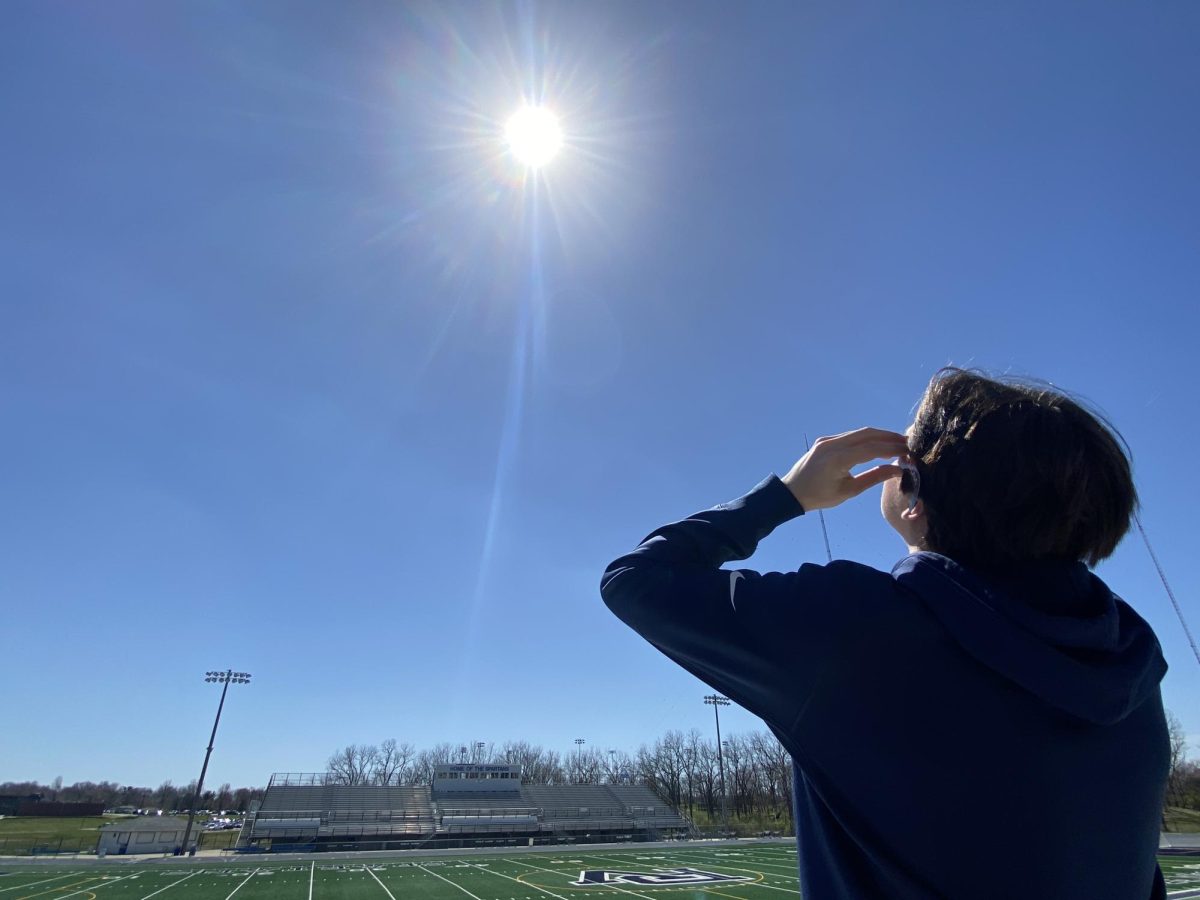On Monday, April 8, North America experienced its second total solar eclipse in just seven years, offering the rare opportunity for millions to see the full effects of the moon blocking out the sun.
A total solar eclipse occurs when the sun, moon and Earth align in orbit. The moon directly overlaps the sun, blocking out its light for specific parts of the world. The path of totality, where the covering of the sun results in complete darkness, spanned a total of 108-122 miles wide as it crossed 15 states on its path across North America.
Many consider this astronomical event to be a once in a lifetime opportunity, providing the motivation to witness the rare phenomenon in person. Wanting to see the full effects of the eclipse, statistics teacher Nicholas Sacco traveled with his family to the path of totality.
“It’s really a once in a lifetime event which is why I drove my family to southern Illinois so I could see the eclipse in totality,” he shared.
Able to relate the celestial event to his classes, Sacco was eager to share these plans with his students. “It’s extremely unusual, which is a statistics concept, so I get really excited about events like this. The probability of a total eclipse occurring is so slim and since we’re so close to being in the path of totality I did not want to miss my chance to see it in person,” he explained.
Solar eclipses occur in what astronomers break into four total phases. The first phase, referred to as C1, occurs when the moon first begins to obscure the view of the sun. The few minutes between C2 and C3 are when totality begins and ends, also known as the peak of the eclipse. C4 is when the moon is no longer obscuring the view of the sun.
The peak of the eclipse occurred at exactly 2:03 pm (CST), while many students were still in class. Fortunately, some teachers allowed their students to go outside to experience the historical event.
Freshman Joshua P D’Cruz is thankful he was provided this opportunity. “I was in English class and my teacher asked if we wanted to go outside to watch the solar eclipse. There was almost no hesitation as we grabbed our glasses to head outside. I’m really glad I got to experience it,” he shared.
The next total solar eclipse isn’t set to occur until August 23, 2044, increasing an appreciation for the chance to experience such a rare astronomical event.









